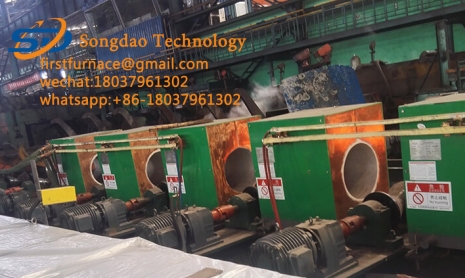- 22
- Nov
Common quality problems and causes of induction heat treatment
Common quality problems and causes of induction heat treatment
Induction heat treatment is a heat treatment method in which induction current is generated on the surface of the part to rapidly heat the surface of the part. The main advantages of this process: high surface hardness of the processed parts, good wear resistance and fatigue resistance, small deformation, high productivity, energy saving, and no pollution. Induction heating heat treatment usually involves round steel (tube) quenching and tempering, surface quenching of guide wheels, driving wheels, rollers, piston rod quenching and tempering, pin quenching and tempering, long π beam quenching and tempering, movable column quenching and tempering, etc.
The common quality problems of induction heat treatment are: cracking, too high or too low hardness, uneven hardness, too deep or too shallow hardened layer, etc. The causes are summarized as follows:
1. Cracking: heating temperature is too high, uneven temperature; too rapid and uneven cooling; improper selection of quenching medium and temperature; untimely tempering and insufficient tempering; material permeability is too high, components are segregated, defective, and excessive Inclusions; unreasonable part design.
2. The hardened layer is too deep or too shallow: heating power is too large or too low; power frequency is too low or too high; heating time is too long or too short; material permeability is too low or too high; quenching medium temperature, pressure, Improper ingredients.
3. The surface hardness is too high or too low: the carbon content of the material is too high or low, the surface is decarburized, and the heating temperature is low; the tempering temperature or holding time is improper; the quenching medium composition, pressure, and temperature are improper.
4. Uneven surface hardness: unreasonable sensor structure; uneven heating; uneven cooling; poor material organization (banded structure segregation, local decarburization)
5. Surface melting: The structure of the sensor is unreasonable; the parts have sharp corners, holes, grooves, etc.; the heating time is too long; there are cracks on the surface of the material.

